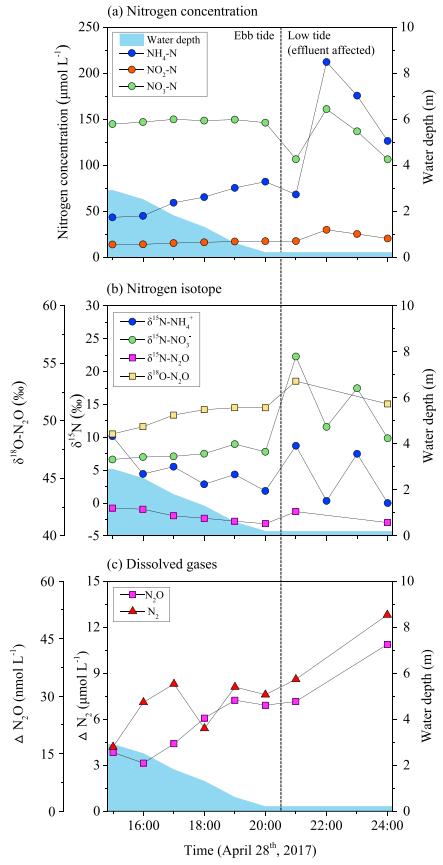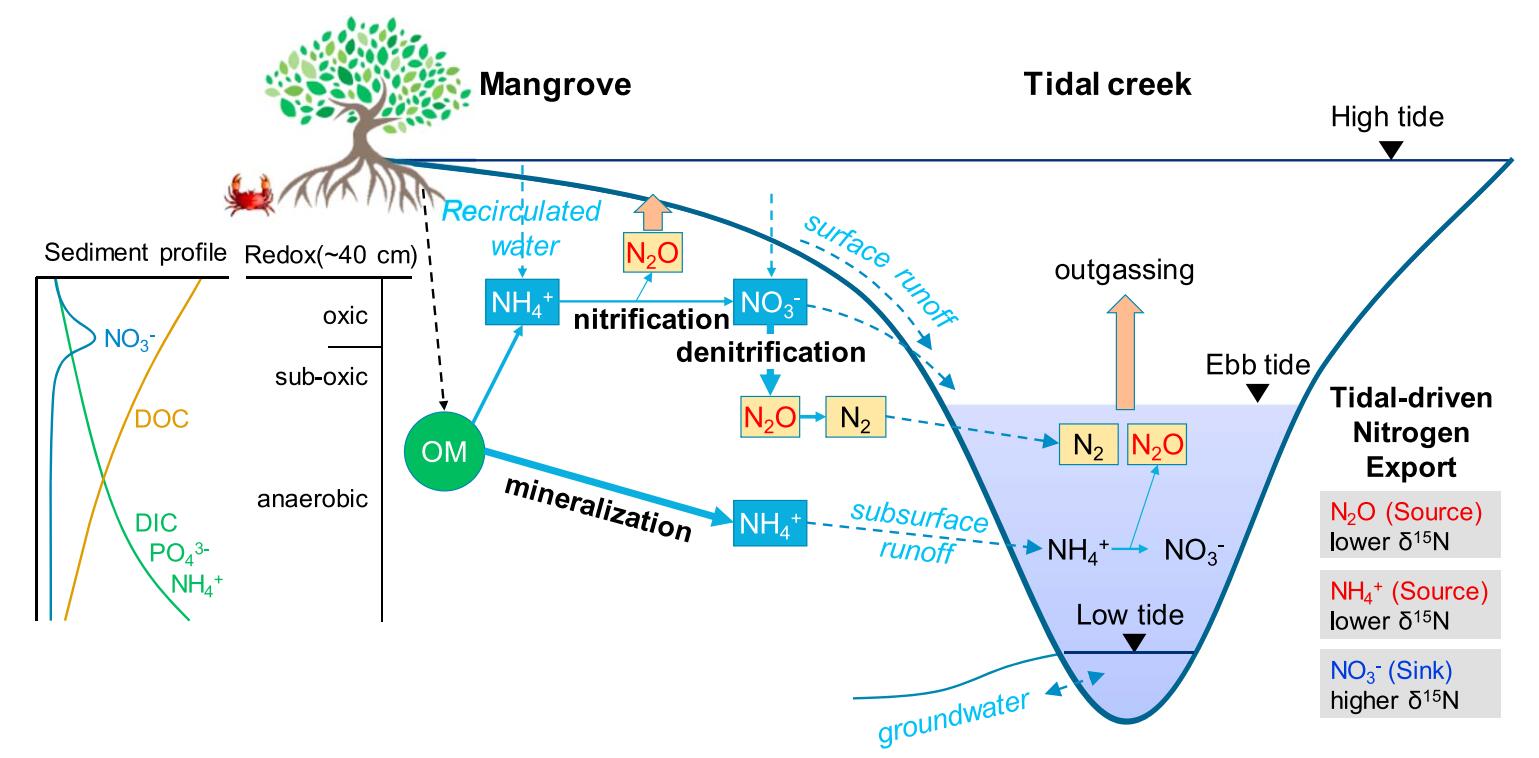Wang F.F., Chen N.W., Yan J., Lin J.J., Guo W.D., Cheng P., Liu Q., Huang B.Q. and Tian Y.. 2019. Journal of Geophysical Research:Biogeosciences, 124(5): 1194-1208.
Mangrove wetlands support numerous ecosystem services including nutrient cycling and carbon sequestration and storage (blue carbon). Mangrove sediments may serve as a nitrogen source or sink to the hydrosphere and atmosphere at both regional and global scales. However, major mechanisms controlling the connection between the mangrove and the adjacent tidal creek (nitrogen cycling in sediments and outfluxing) remain unclear. A multidisciplinary study based on intensive investigation, incorporating detailed sediment profiling, multi-isotopes analysis, sediment incubation, and microbiological identification was conducted in the Yunxiao mangrove reserve and Zhangjiang Estuary in southeast China. Here we show that mineralization and denitrification are major processes shaping mangroves as an ammonium source and nitrate sink. Enrichment of ammonium in pore water (10–40 cm in depth) likely resulted from strong ammonification with limited nitrification in the anaerobic sediments. Denitrification played a key role in nitrate removal from pore waters while producing N2O and N2. Decreasing δ15N-N2O and associated δ15N:δ18O ratio suggested that most of the outgassing N2O was derived from incomplete denitrification in sediment pore water. Overall, there was a net export of dissolved inorganic nitrogen from mangroves toward the estuary in winter and spring but a net import to mangroves in summer and fall, mainly driven by tidal pumping with seasonal variation of bio-uptake. These findings highlight the role of mangrove wetlands in regulating nutrient status and carbon budget in coastal areas.

Figure 1. Temporal variation of nitrogen (a), isotopic compositions (b), and dissolved gases (c) in tidal creek (site T) during ebb tide and low tide when sluices open to discharge effluents. △N2 and △N2O indicate the difference between measured concentrations and equilibrium values with the atmosphere (refer to equations (1) and (2)).

Figure 2. A conceptual schematic of hydrobiogeochemical controls on nitrogen cycling, lateral transport, and greenhouse gases outgassing in the mangrove-creek interfaces.

